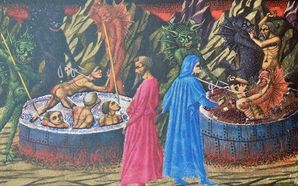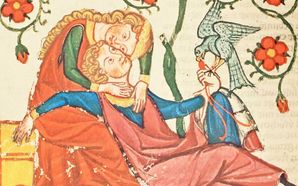Mythology
Myths and legends were popular forms of medieval literature, reconciling Christian and pagan traditions and consisting of various creation myths, origin myths, and folklore. Some were rooted in pagan traditions from Greek and Roman antiquity, like the Trojan War or the Bible, while others evolved from stories either true or untrue that are rooted in the Early Middle Ages and focused on figures like King Arthur and Charlemagne.
Like modern fiction, myths were the lies that medieval Europeans told one another to discover the greater truths of life, or to simply explain social customs, institutions, and taboos. Legends, on the other hands, were exaggerated retellings of people who may have existed but about whom few facts exist – such as Siegfried or Agamemnon – rather than purely fanciful stories about the gods.
Although illuminated manuscripts depicting various myths and legends were created throughout the Middle Ages, renewed interest in ancient works during the Late Middle Ages and the rise of Renaissance Humanism (when princely houses wanted to prove their descent from Trojan heroes) resulted in the formal study of mythology in the West for the first time since Late Antiquity.
Demonstration of a Sample Page

Guido de Columnis: The Trojan War
The Wedding of Paris and Helen
Homer’s epic tale of the destruction of Troy as written by Guido de Columnis was beloved by medieval audiences for its scenes of war, chivalric romance, and court life. The love between the Trojan prince Paris and the Spartan princess Helen was the catalyst for the bloodshed of the Trojan War, but amidst that tale of gods and men battling with one another, this is a scene of love and tranquility.
The wedding is presented in the context of a Gothic cathedral, as witnessed through its pointed main doors. Both bride and groom are depicted as slender figures with thick, flowing locks of brown hair, small noses, pursed lips, and pink cheeks. Paris is dressed in a green tunic and tights while Helen has a long train of pink and gray.





